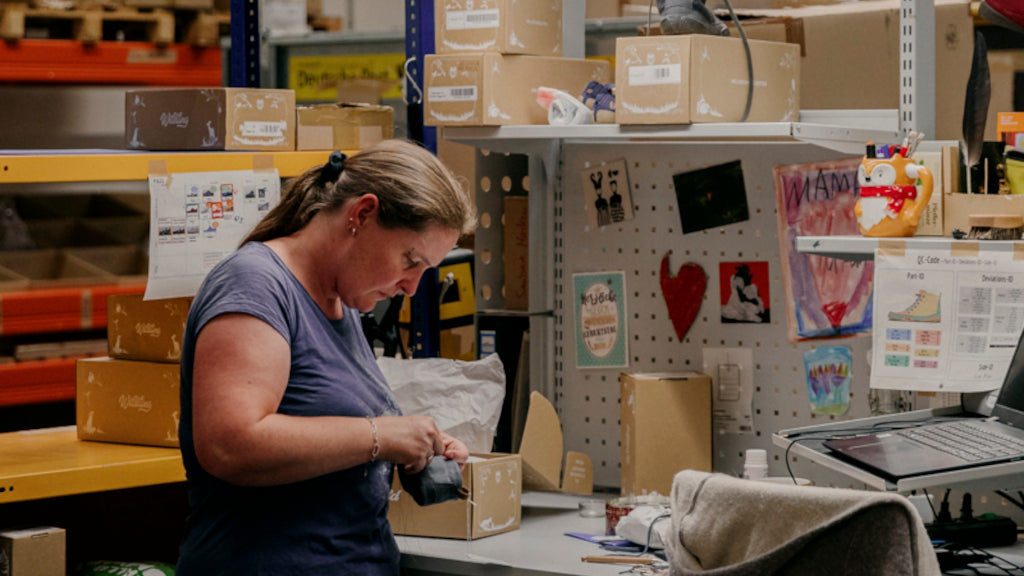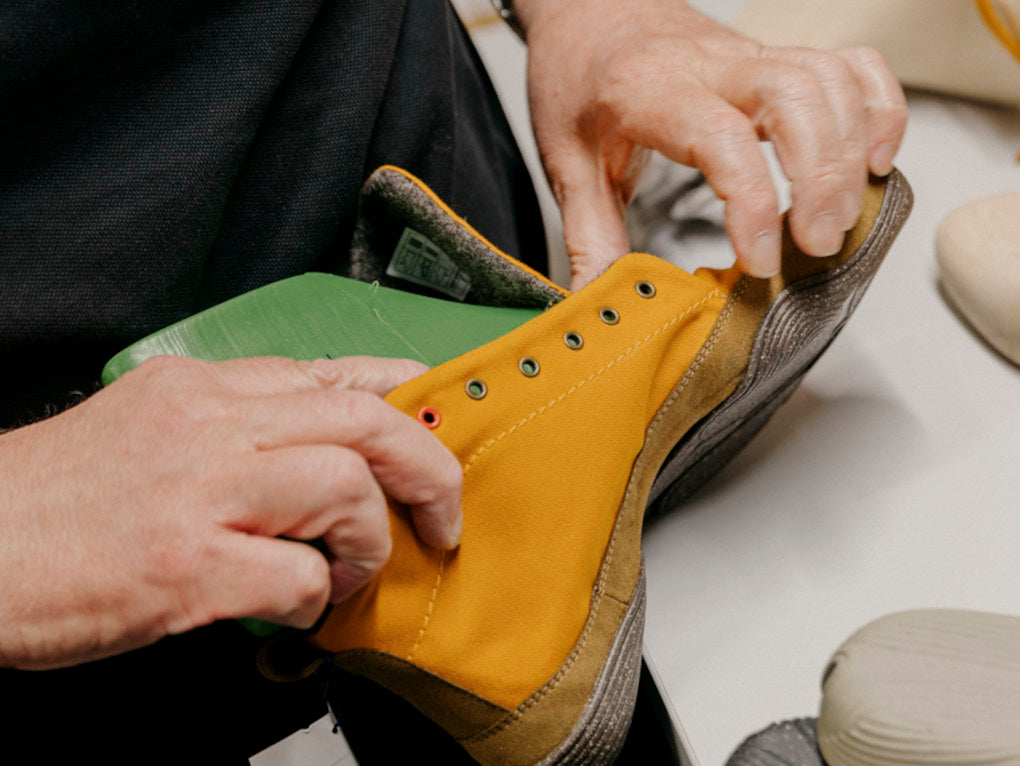How can we produce minimal shoes that are both flexible and robust? How can we combine freedom of movement, a natural walking sensation and a conscious use of resources? These questions about quality and durability have been on the minds of the Wildling team and the Wildling community from the very beginning.
Julian heads the Quality Management team at Wildling. In the interview, he gives us insight into the challenges that arise time and again.

When you joined Wildling, your team was still in its infancy and you were building it up together. What did it take for that to happen?
Julian: The commitment of the company. That is definitely the case at Wildling. Quality management needs a management team that is fully behind the Quality issue and the right attitude throughout the company among all the colleagues to work together at all levels. This empowers us as the Quality Management team to give our best.
Take us into your everyday life: What does a typical work week in the Quality Management team look like?
On Monday mornings, the first thing I do is look at the key figures from our quality evaluation of the previous week. After that, the daily routine is quite different.
Quality covers a wide range of topics, from the shoes themselves and their individual components to production processes and strategic issues, such as "What requirements will our quality management system have to meet in two years' time? As a team, we focus on two main areas: testing and quality control. We have also established the Wildling Repair Center.

Image: Kayla Kauffman
What is the difference between testing and quality control?
Testing starts during the development of new models. The product development team is always designing new models that we put through their paces during the development process. My team organizes these tests, analyzes the results and prepares them so that the product team can further optimize the respective models. Only after several optimization steps does a new model actually go into production with our partners in Portugal.
Quality control focuses on the Wildlings that are already in production. On the one hand, there are quality controls during production on site in Portugal, which we evaluate on a daily basis, so that, if necessary, we can make targeted adjustments very quickly. And then there are also random checks on the finished shoes that are delivered to the warehouse in Engelskirchen. If we find any anomalies, we document them and discuss with the team in Portugal what they need to pay particular attention to during production in order to avoid mistakes. Shoes with minor defects go into the B- or C-goods.
At the end of a season, we come full circle. We collect all the data from the inspections, customer claims and returns and feed it back into product development. We work very closely with both the product development team and the production team in Portugal.
So there are quality tests as early as the development phase for a new model?
Yes, even during development, the materials are tested for durability and other physical properties. For the first prototypes of a new model, there is a simulation device that repeatedly makes the same walking motion to see if there are any weak points that we can then correct. In the later stages of a model's development, we do the testing with real people who try out prototypes in everyday life.

Image: Kayla Kauffman
How are you connected with the production in Portugal?
With Portugal, we actually have an online meeting every week.
We discuss any issues that have come to our attention. Their origin varies greatly, from production issues directly or from our inspections, to input from Customer Service, to questions from the community.
Additionally, we have also significantly increased our presence at our production facility near Porto and are on site more often. This allows us to exchange ideas about quality issues even more directly. We have learned that the interpersonal level is fundamental for cooperation with our partners in Portugal.
Are there ways to measure the long-term impact of quality measures?
We measure quality at various stages in the company and have been monitoring production quality, claims, returns quality and customer satisfaction for a number of years. We conduct surveys after orders and ask about the quality of the shoes. According to the survey results, the level of satisfaction in terms of product quality is always very high.
As in other industries, it is unfortunately not possible to completely rule out the possibility of a less than perfect item ending up with a customer. Of course, we have a customer service department that is happy to take care of this. Nevertheless, such situations can lead to expressions of dissatisfaction, for example on social media, which can then distort the external perception.
However, our evaluations and figures tell us quite clearly: since the Quality Management Team has been in place, quality has increased measurably from year to year.
How do you concretely measure quality?
We have set quality standards and limits for each feature of the shoe. It's a very comprehensive catalog. We then use these limit values to categorize the shoes as A, B, C or D grade goods. Another metric, for example, is the number of complaints, which is steadily declining.
The Repair Center that we set up a year ago also provides us with interesting insights and additional data. The initial findings have already been incorporated into development and production.
What are your biggest challenges?
The production of our shoes is very complex. That's what makes Wildlings so great, but of course it also presents us with challenges. One example, which you can certainly imagine from your own everyday experiences, is the balancing act of firmly attaching soles to the shoe while at the same time avoiding adhesive residue. We want to reduce adhesive residue, but of course absolutely ensure that the sole remains firmly attached to the shoe for years. That can be a fine line.
But the most difficult quality issue is always the one that has never happened before. The goal is always to catch a potential defect as early in the process as possible. The biggest challenges are the unknown and unimaginable defects. For everything that has been there once, we are well positioned afterwards.
Wird es irgendwann den perfekten Wildling geben?
From the perspective of production quality, we can only achieve one hundred percent perfection if we were to stop developing new models. New developments always create new challenges. Because with every new combination of different fabrics, yarns, heel loops and soles, we create an innovation that can behave differently from its predecessors.
Everything is constantly evolving: Wildling as a company, our models and also the wishes of the Wildling community. Tomorrow, the perfect Wildling may look a little different than it does today.
But does that mean we should stop innovating? Then we wouldn't be Wildling anymore, and I suspect that wouldn't be in the Wildling community's best interest either.
Thank you, Julian, for the exciting interview.
Cover image: Kayla Kauffman



